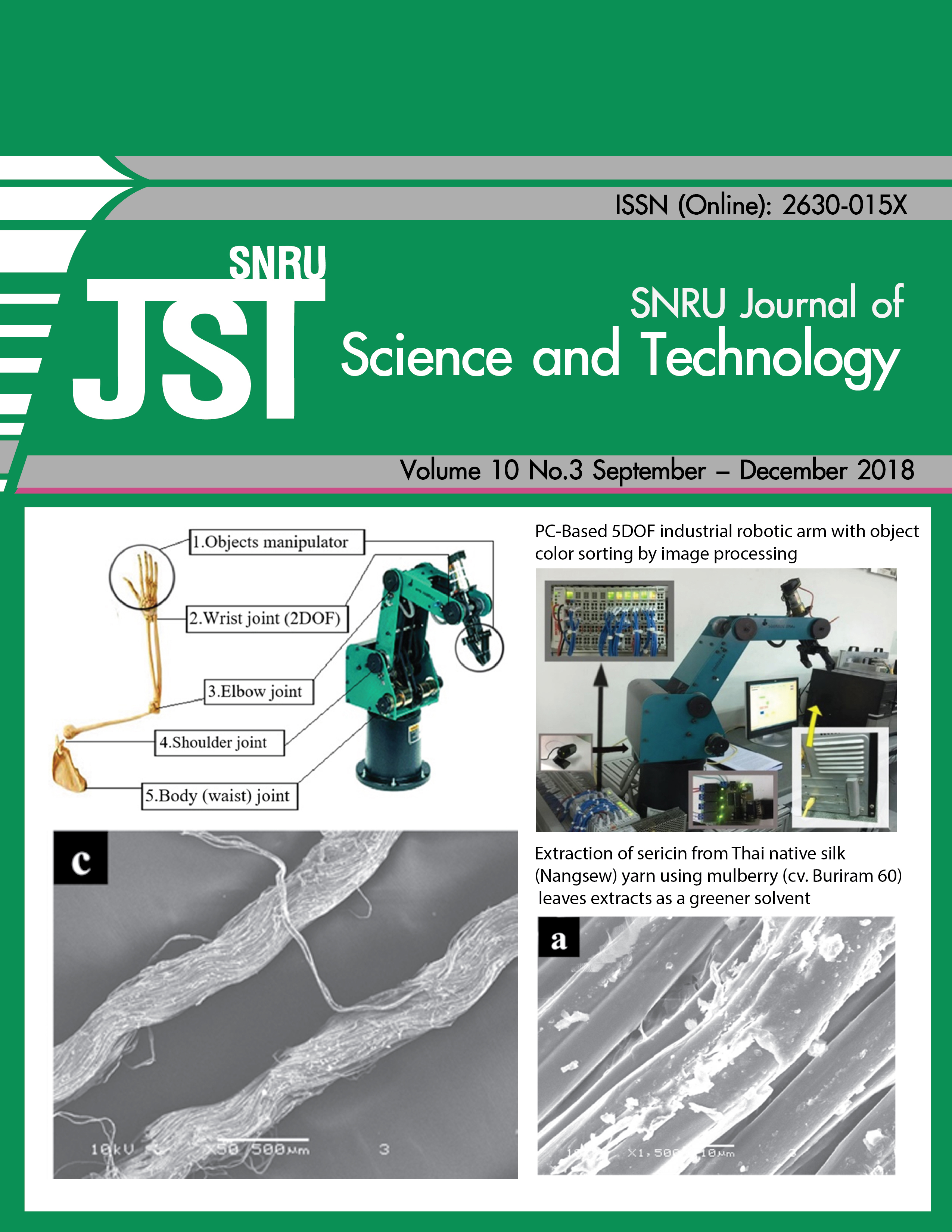Extraction of sericin from Thai native silk (Nangsew) yarn using mulberry (cv. Buriram 60) leaves extracts as a greener solvent.
Keywords:
Sericin, Extraction, Mulberry leavesAbstract
In the present study, Mulberry (cv. Buriram 60) leaves extracts is being used as a greener solvent for sericin extraction from Thai native silk (Nangsew) yarn. The extraction parameters such as extraction time, extraction temperature and solvent concentration were optimized. The optimal conditions included an extraction time of 30 min, an extraction temperature of 80 °C and a solvent concentration of 1 % w/v. Under these conditions, the maximal yield of sericin was 3.7 ± 0.4 % w/w. Moreover, the sericin extraction on different size of silk (mai 1, mai 2 and mai 3) have been studied. The results showed that the yield of sericin differed depending on the size of silk. The effect of mulberry leaves extracts solvent on the yield and structural characteristics of sericin and physical properties of silk were examined and compared with conventional solvents (hot water, commercial base for silk degumming and sodium carbonate). The extraction of sericin with a commercial base for silk degumming and sodium carbonate exhibited the high yield but produced the impurity sericin. The tensile strength of silk was decreased at about 150 MPa, indicating partial harmful damages of silk molecules after extraction. On the other hand, mulberry leaves extracts solvent generated purified sericin and tensile strength of silk was not decreased. Furthermore, sericin extracted with mulberry leaves extracts solvent showed the highest DPPH radical scavenging activity (63.37 mmol TE/g) and high level ABTS antioxidant activity (656.40 mmol TE/g) compared with other solvents. The finding of this research expected that the sericin extracted with mulberry leaves extracts solvent could be utilized in applications without further purification.









